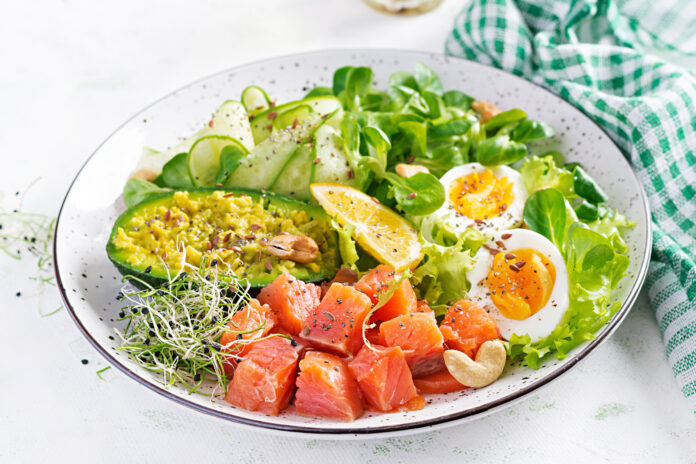Osteoarthritis (OA) affects millions worldwide, causing joint pain, stiffness, and reduced mobility. While there’s no cure, emerging research highlights that targeted nutrition can play a pivotal role in symptom management and slowing disease progression. Rather than chasing miracle foods, understanding what actually matters—anti‑inflammatory nutrients, weight‑management strategies, and gut‑supporting foods—can empower you to eat your way to better joint health.
Understanding Osteoarthritis and Its Nutritional Implications
Osteoarthritis is a degenerative joint disease characterized by the breakdown of cartilage, joint inflammation, and bone changes. Aging, genetics, and mechanical stress are primary drivers, but diet can influence:
-
Inflammation: Certain foods can exacerbate or dampen inflammatory pathways.
-
Cartilage Health: Nutrients like vitamin C and collagen precursors support cartilage repair.
-
Weight Management: Excess weight increases joint load, accelerating cartilage wear.
By focusing on the right foods and nutrients, you can tackle these factors holistically.
The Anti‑Inflammatory Foundation: Foods to Embrace
Chronic low‑grade inflammation is a hallmark of OA. An anti‑inflammatory diet doesn’t eliminate inflammation entirely (which is necessary for healing) but keeps it in check.
1. Omega‑3 Fatty Acids
Omega‑3s reduce the production of pro-inflammatory cytokines and eicosanoids.
-
Sources:
-
Fatty fish: salmon, mackerel, sardines.
-
Plant‑based: flaxseeds, chia seeds, walnuts.
-
-
Evidence:
The British Dietetic Association recommends two servings of oily fish weekly—or equivalent fish‑oil capsules (450 mg EPA+DHA daily)—to improve pain and function in knee OA.
2. Antioxidant‑Rich Fruits and Vegetables
Antioxidants neutralize free radicals that damage cartilage and exacerbate inflammation.
-
Key Picks:
-
Berries (strawberries, blueberries): high in anthocyanins.
-
Dark leafy greens (spinach, kale): rich in vitamins A, C, and K.
-
Cruciferous veg (broccoli, Brussels sprouts): provide sulforaphane.
-
-
Evidence:
A guide from Arthritis Canada emphasizes fruits and vegetables’ high antioxidant content for inflammation control Société d’arthrite Canada.
3. Whole Grains and Legumes
Fiber and phytonutrients in whole grains and legumes help modulate inflammation and support weight management.
-
Choices:
-
Quinoa, oats, brown rice.
-
Lentils, chickpeas, black beans.
-
-
Why It Matters:
Stabilizing blood sugar reduces insulin spikes that can drive inflammation.
4. Healthy Fats
Besides omega‑3s, monounsaturated fats support anti‑inflammatory pathways.
-
Sources:
-
Extra‑virgin olive oil: rich in oleocanthal, a natural COX‑inhibitor Fondation Arthritis.
-
Avocados and nuts: provide vitamin E and healthy fats.
-
Nutrients That Protect Cartilage and Joint Integrity
Beyond broad anti‑inflammation, specific nutrients directly support cartilage health and joint repair.
1. Vitamin C
-
Role:
Essential cofactor for collagen synthesis—the main structural protein in cartilage. -
Sources:
Citrus fruits, bell peppers, kiwifruit. -
Evidence:
Adequate vitamin C intake is linked to better cartilage integrity and reduced OA progression.
2. Vitamin D and Calcium
-
Role:
Vitamin D regulates immune function and bone health; calcium maintains bone strength around joints. -
Sources:
-
Vitamin D: fatty fish, fortified dairy/plant milks, sunlight exposure.
-
Calcium: low‑fat dairy, fortified plant milks, leafy greens.
-
-
Evidence:
The Arthritis Foundation highlights calcium and vitamin D to support bone health in OA patients.
3. Vitamin K
-
Role:
Involved in cartilage matrix protein modification. -
Sources:
Kale, spinach, broccoli, fermented foods.
4. Collagen Precursors
-
Role:
Amino acids like proline and glycine support new collagen formation. -
Sources:
Bone broth, gelatin, or supplements containing hydrolyzed collagen peptides.
Foods and Habits to Limit or Avoid
Equally important to what you eat is what you don’t eat. Certain foods can fuel inflammatory pathways and accelerate joint damage.
1. Refined Carbohydrates and Added Sugars
-
Why to Avoid:
Promote rapid blood sugar spikes, insulin resistance, and inflammation. -
Examples:
White bread, pastries, sugary beverages.
2. Processed and Red Meats
-
Why to Avoid:
High in saturated fat and advanced glycation end-products (AGEs) that can worsen inflammation.
3. Trans Fats and Excess Saturated Fats
-
Why to Avoid:
Found in many packaged snacks—they elevate LDL cholesterol and systemic inflammation.
4. Excess Alcohol
-
Why to Avoid:
Impairs nutrient absorption and can increase inflammation and oxidative stress.
Weight Management: The Cornerstone of OA Nutrition
Maintaining a healthy weight is one of the most impactful strategies for reducing OA symptoms.
-
Why It Matters:
Each pound lost can reduce knee joint load by 4 pounds, significantly decreasing pain and improving function. -
Nutritional Strategies:
-
Focus on nutrient density: plenty of vegetables, lean proteins, and whole grains.
-
Controlled portions and mindful eating to avoid overeating.
-
Regular protein intake to preserve muscle mass while losing fat.
-
Gut Health and Osteoarthritis: An Emerging Link
Recent research suggests the gut microbiome’s composition influences systemic inflammation and may impact OA progression.
-
Prebiotic and Probiotic Foods:
-
Prebiotics: onions, garlic, bananas, and whole grains feed beneficial bacteria.
-
Probiotics: yogurt, kefir, sauerkraut, kimchi support microbial balance.
-
-
Evidence:
A NutritionFacts review proposes that optimizing gut health can modulate systemic inflammation, potentially benefiting OA patients
Putting It All Together: Sample Meal Plan
Here’s a one-day anti‑inflammatory OA‑friendly meal outline:
-
Breakfast:
Oatmeal topped with blueberries, walnuts, and a sprinkle of ground flaxseeds (fiber, antioxidants, omega‑3s). -
Snack:
Sliced bell peppers and cucumber with hummus (fiber, phytonutrients). -
Lunch:
Mediterranean salad: mixed greens, cherry tomatoes, olives, chickpeas, feta, and olive oil‑lemon dressing (healthy fats, gut‑friendly fiber). -
Snack:
Greek yogurt with sliced strawberries (probiotics, vitamin C). -
Dinner:
Grilled salmon with turmeric‑spiced quinoa and steamed broccoli (omega‑3s, antioxidants, vitamin K). -
Hydration:
Ample water, green tea, and limited coffee or alcohol to support overall health.
Practical Tips for Success
-
Start Gradually:
Introduce one anti‑inflammatory swap per week (e.g., olive oil instead of butter). -
Plan and Prep:
Batch‑cook whole grains and legumes; keep cut vegetables ready for snacks. -
Spice It Up:
Turmeric, ginger, and cinnamon have anti‑inflammatory properties—add them to teas, oatmeal, or stir‑fries. -
Mindful Eating:
Slow down, savor your food, and listen to hunger/fullness cues to avoid overeating. -
Monitor Progress:
Keep a food and symptom journal to identify which dietary changes most improve your OA discomfort.
Conclusion
While no single food can cure osteoarthritis, a strategic approach to nutrition—focusing on anti‑inflammatory foods, cartilage‑supporting nutrients, weight management, and gut health—can make a tangible difference in symptom relief and quality of life. By embracing whole foods like fatty fish, colorful fruits and vegetables, whole grains, and healthy fats, while limiting sugars, processed meats, and trans fats, you can empower your body’s natural healing processes and protect your joints for the long term.
Disclaimer
This article is intended for informational purposes only and does not constitute medical or professional advice. Always consult with a qualified healthcare provider or registered dietitian before making significant changes to your diet or lifestyle, especially if you have underlying health conditions.
































